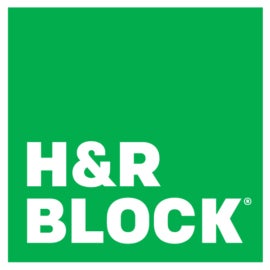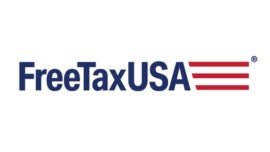
Filing taxes can be irritating enough for personal finances, but business taxes tend to be more complex, with more at risk in the event of an error and a greater chance of mistakes. So how you handle taxes may be a major concern, especially for organizations that don’t have dedicated tax accountants on staff and a limited budget to address the task.
That doesn’t mean you’re on your own, though. The right tools can help minimize risk and overhead, keep you compliant and reduce the overall difficulty and stress — so we’ve broken down the top five vendors of tax software for 2023.
Jump to:
While we could list dozens of pertinent features and benefits that differentiate solutions in this particular niche of the financial space, we thought it best to keep it simple and target some of the biggest pain points felt by SMBs across nearly every industry.
Unlike so many SaaS categories for business users, tax software rarely, if ever, comes with freemium options or free trials (which, in this context, are usually reserved for personal tax filers). That said, there are enough options to accommodate different budgets and use cases.
| Starting price | Multi-state support | Expert support | Audit support | Full-service | ||
|---|---|---|---|---|---|---|
| TurboTax | $129 (pricing varies by included features) | Yes (add-on fee) | Yes (plan upgrade) | Yes | Yes (plan upgrade) | Try TurboTax |
| H&R Block | $89 + $19.95/state | Yes (add-on fee) | Yes (plan upgrade) | Yes | Yes (plan upgrade) | Try H&R Block |
| eFile.com | Federal: $20 State: $29.95 flat fee |
Yes (flat fee) | Yes | No | No | Try eFile.com |
| TaxAct | $64.99 + $44.99/state | Yes (add-on fee) | Yes (add-on fee) | No | No | Try TaxAct |
| FreeTaxUSA | Federal: Free State: $14.99/state |
Yes (add-on fee) | Yes (add-on fee) | No | No | Try FreeTaxUSA |
Just as QuickBooks is the industry juggernaut for business accounting solutions, TurboTax has cornered much of the market for tax preparation and filing, both for personal filers and businesses.
It makes sense: Intuit is the parent company of both software tools, and they’ve designed these solutions to be as robust and comprehensive as possible. Such a deep feature set comes with an appropriately sized price tag, but it’s hard to dispute the value you get for the investment.
Pricing for TurboTax is a little more complex than its offerings for personal finances. Pricing varies a lot more for businesses than for personal filers, ranging from software for contractors to full-service offerings for businesses. Business filers may be able to file for as little as $129 or as much as $1,499 (with additional fees for state filings). A number of factors can affect and increase this cost:

Another heavyweight in the tax industry, H&R Block started as a tax preparation service provider before pivoting into digital filings. Much like TurboTax, H&R Block boasts impressive expert support, as well as full-service tax prep. What’s more, this software has offerings heavily tailored to businesses. Beyond that, those interested in “done for you” tax services can simply drop off the necessary documentation, and H&R Block handles the rest.
Like TurboTax, pricing for H&R Block becomes more complex when used for businesses. That said, H&R Block does provide more transparency and clarity:

TaxAct is a middle ground between the enterprise-grade offerings of brands like Turbotax and more stripped-down tools like FreeTaxUSA (more on that vendor below). TaxAct offers expert support but not full-service tax prep, for one. For another, their software opts for a more simplistic aesthetic in the UI, in contrast to the very polished, stylized interfaces of the industry leaders.
What that leaves you with is a tool that brings just about everything to the table that the big names do but at a reduced price. You’re not totally on your own, but you’re also not paying for white-glove treatment either.
Filers can also bundle and save by using TaxAct to file personal taxes alongside business taxes.

At the end of the day, sometimes all you really need is a low-cost, low-complexity tool to help you complete tasks you already handle regularly. In this case, that’s FreeTaxUSA.
It’s not especially tailored to business use cases and doesn’t offer expert support or full-service preparation. But not every team needs those features. For some, they just need a way to file electronically that keeps the overhead as low as possible. And for those users, FreeTaxUSA delivers exactly what they’re looking for.
As mentioned above, there are plenty of features that come into play with software that facilitate important business processes like these. That said, a few features and concerns are common pretty much across the board and can be confusing for anyone who hasn’t dealt much with this particular niche in the past.
If you haven’t already, you’ll likely find that the fee structure for tax preparation services is among the most opaque. Some vendors will go to great lengths to convince you of the low cost (or no cost) of their offerings, only to saddle you with numerous add-on fees at the end of the process.
Most of the time, any mention of “free” refers to federal filings, and then usually just a narrow subset of circumstances that qualify for that bargain. Everything else will be an added cost.
And while businesses tend to have an easier time paying for things like this than personal filers, that doesn’t mean that budgets are bottomless. Some smaller businesses may be working under the professional equivalent of hand-to-mouth finances, and unpredictable costs can be a major concern.
That’s why it’s important to thoroughly vet vendors like these if price is a larger factor. Some will be upfront with their costs or make certain aspects of cost reduction blatant (like the flat fee for state filings). Others will try to hide some of the fees until the very end.
On the whole, though, you can usually expect to see fees, hidden or otherwise, for things like:
Not every business filer is in need of expert support when doing their taxes. Maybe the person filing is an accountant. Maybe they already have a tax guru on staff or on retainer. Maybe their situation is straightforward enough that they can pretty much handle it on their own. But not all teams are that lucky.
That’s one thing that can be said in favor of the more expensive vendors — they usually package their services with, or with the option to upgrade to, expert support. Even having someone you can jump into a chat with and ask a quick question can do wonders, both for the accuracy of the tax filing and for your peace of mind.
Tax audits are always a possibility, but they’re more likely for businesses than for most individuals. A lot of that is due to the complexity of business taxes, especially larger businesses or those across states.
There are two parts to avoiding audits: getting the information right to start and preparing the taxes properly. Many tax software titles offer some protection if something is missed, but the bigger the risks you’re dealing with, the more you’ll want to pay attention to the “how” and the “what” of any guarantee a vendor makes about this to make sure your bases are covered.
Despite the best of efforts and the most extensive of expertise, sometimes there may be a flaw in what’s initially filed. Whatever the cause or situation, filing amendments and the like will be an inconvenience at best, even if it’s better than the alternative.
If this is something you’ve dealt with in the past or something you want to get ahead of in the future, look for vendors that make that process easier (as some will gate features like digital refilings behind add-on fees or upsells).
When deciding on a business tax solution, two factors matter more than almost anything else: your available budget and the accounting expertise you currently have access to. If you have an on-staff tax pro, then expert support, full-service prep or other “value-add” features will be of little benefit.
On the other hand, if you lack access to CPA support on your end, or are otherwise constrained by budget limits, tools that bridge the gap between premium service and economy pricing will likely serve you best. Other than that, it’s all down to use case nuances.
While writing this article, we researched the vendors and their websites, as well as customer reviews and ratings, to gain a full understanding of where each solution fits into the market landscape — and who they serve most effectively.